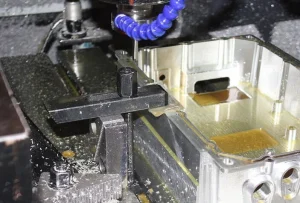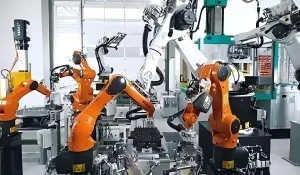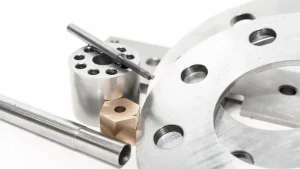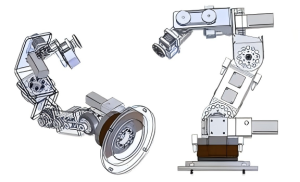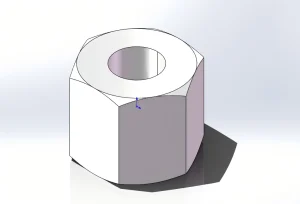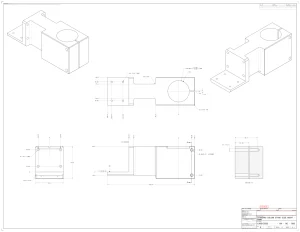I. Introduction
A. Hook
Have you ever wondered how your aluminum laptop stays scratch-free and looking sleek, or how the aluminum rims on your car maintain their shine even after years of use? The answer lies in a process called anodizing. From the smartphones in our pockets to the architectural elements adorning modern buildings, anodized products are all around us, enhancing both the aesthetics and functionality of various items we encounter in our daily lives.
B. Definition of Anodizing
Anodizing is an electrochemical process that converts the metal surface, typically aluminum, into a decorative, durable, and corrosion-resistant finish. It involves creating an oxide layer on the metal’s surface, which not only provides protection but also allows for a wide range of color options and surface textures, making it a popular choice in industries ranging from aerospace to consumer electronics.
C. Importance and Relevance
In today’s competitive market, the quality and appearance of products play a crucial role in attracting consumers. Anodizing offers manufacturers the ability to produce high-quality, long-lasting products that meet the demands of both functionality and aesthetics. For consumers, it means investing in items that will maintain their value and appearance over time, whether it’s a piece of jewelry, a household appliance, or industrial equipment. Understanding anodizing is not only beneficial for those in the manufacturing industry but also for consumers who want to make informed decisions about the products they purchase.
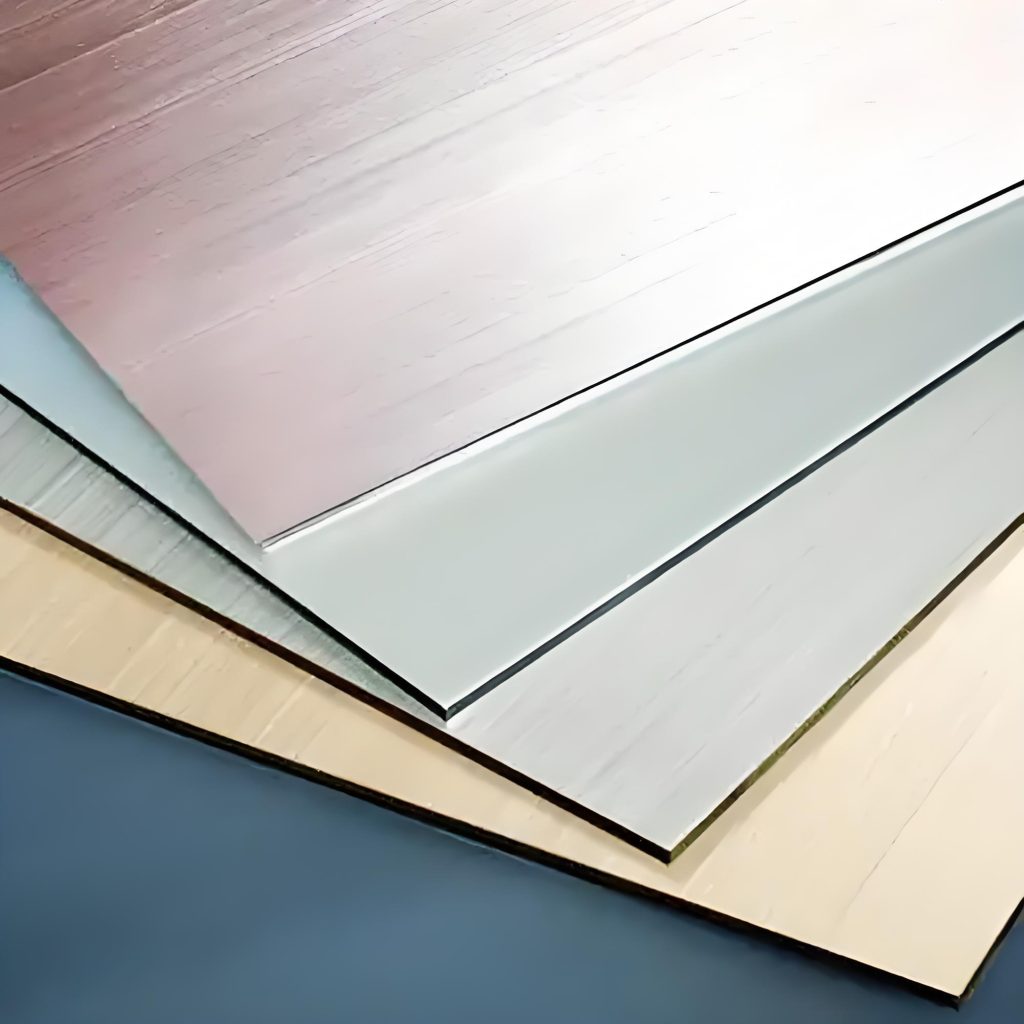
II. The Anodizing Process Unveiled
A. Surface Preparation
Before the anodizing process begins, the aluminum surface must be meticulously cleaned and pretreated. This involves removing any dirt, grease, or oxide layers that may be present. The metal is typically degreased using alkaline cleaners and then etched to create a microscopically rough surface, which enhances the adhesion of the anodic oxide layer. This step is crucial as any contaminants left on the surface can lead to uneven anodizing and a less durable finish.
B. Electrolytic Process
The heart of anodizing lies in the electrolytic process. The cleaned aluminum part is immersed in an electrolyte solution, usually sulfuric acid, and connected to the positive terminal of a power source, making it the anode. A cathode, often made of lead or stainless steel, is also placed in the solution. When an electric current is passed through the circuit, oxygen ions are released at the anode, which react with the aluminum surface to form a layer of aluminum oxide. The thickness of this oxide layer can be controlled by adjusting the voltage, current density, and the duration of the electrolysis. A higher voltage or longer processing time will result in a thicker oxide layer, providing greater protection and durability.
C. Dyeing and Sealing
Once the anodic oxide layer is formed, the aluminum can be dyed to achieve a desired color. This is done by immersing the anodized part in a dye solution, which penetrates the pores of the oxide layer. Organic dyes are commonly used for a wide range of vibrant colors, while inorganic pigments can provide more fade-resistant and heat-stable finishes. After dyeing, the pores of the oxide layer are sealed to enhance the corrosion resistance and colorfastness. This is typically achieved by immersing the part in a hot water bath or using a sealing agent, which causes the oxide layer to hydrate and close the pores, locking in the color and protecting the surface from environmental factors such as moisture and UV radiation.
III. Benefits of Anodizing
A. Corrosion Resistance
One of the primary benefits of anodizing is its ability to protect metals from corrosion. The anodic oxide layer acts as a barrier, preventing moisture and other corrosive substances from reaching the underlying metal. This is particularly crucial in outdoor applications or in environments where the metal is exposed to harsh chemicals or fluctuating weather conditions. For example, anodized aluminum window frames can withstand years of rain, snow, and UV exposure without showing signs of rust or deterioration, ensuring the longevity and structural integrity of the building. In industrial settings, anodized machinery parts are less likely to corrode, reducing maintenance costs and downtime.
B. Aesthetic Appeal
Anodizing offers a wide array of color and finish options, making it a favorite among designers and consumers alike. From sleek matte blacks to vibrant metallic hues, the possibilities are nearly endless. This allows manufacturers to create products that match specific brand aesthetics or interior design schemes. In the consumer electronics industry, anodized finishes are used to give smartphones, laptops, and tablets a modern and stylish look
IV. Applications in Different Industries
A. Aerospace
In the aerospace industry, anodizing plays a crucial role in enhancing the performance and durability of aircraft components. Aluminum alloys, which are widely used due to their lightweight properties, are anodized to protect against corrosion caused by exposure to harsh atmospheric conditions at high altitudes. The anodic oxide layer also provides electrical insulation, which is essential for certain components to prevent interference and ensure the proper functioning of onboard electronics. For example, the frames of aircraft windows are often anodized to not only resist corrosion from moisture and temperature changes but also to maintain their structural integrity and appearance over the long service life of the aircraft.
B. Automotive
The automotive industry has embraced anodizing for both functional and aesthetic purposes. Anodized aluminum is used in various car parts such as wheels, trim, and engine components. The corrosion resistance provided by anodizing helps these parts withstand the rigors of road conditions, including exposure to salt, water, and other corrosive substances. From a design perspective, anodized finishes offer a sleek and modern look that can enhance the overall appearance of the vehicle. Car manufacturers can choose from a variety of anodized colors and finishes to match different models and trims, giving consumers a wide range of options to customize their vehicles.
C. Architecture
In architecture, anodized metals have become a popular choice for building facades and interiors. The durability and weather resistance of anodized aluminum make it suitable for outdoor applications, where it can maintain its color and finish for years without fading or corroding. It is used in curtain walls, roofing systems, and decorative panels, adding a contemporary and stylish touch to modern buildings. Inside, anodized aluminum can be found in handrails, elevator interiors, and door frames, providing a clean and sophisticated look while also being easy to maintain. The ability to produce large anodized panels with consistent color and finish has made it a preferred material for architects looking to create unique and visually appealing structures.
D. Consumer Electronics
Consumer electronics are perhaps some of the most visible applications of anodizing. From smartphones and tablets to laptops and cameras, anodized aluminum casings are prevalent. The process not only protects the delicate electronic components inside from scratches and damage but also gives the devices a premium and high-quality feel. The wide range of available colors and finishes allows manufacturers to differentiate their products in a competitive market. For instance, a matte anodized finish on a smartphone may appeal to consumers who prefer a more understated and professional look, while a polished anodized finish can add a touch of luxury and elegance to a high-end laptop.
V. Factors Affecting Anodizing Quality
A. Material Selection
Not all metals are suitable for anodizing, and the choice of material can significantly impact the results. Aluminum is the most commonly anodized metal due to its natural ability to form a stable oxide layer. However, different aluminum alloys may respond differently to the anodizing process. For example, alloys with higher copper content may result in a darker anodic oxide color, while those with magnesium may offer improved corrosion resistance. Other metals like titanium can also be anodized, producing unique colors and finishes, but the process parameters need to be adjusted accordingly. The purity and composition of the metal play a crucial role in determining the quality and appearance of the anodized surface.
B. Process Parameters
Several process parameters must be carefully controlled to achieve the desired anodizing quality. Voltage is a critical factor; increasing the voltage generally leads to a thicker oxide layer, but it must be within a specific range to avoid issues such as burning or pitting of the surface. The electrolyte composition and concentration also affect the anodizing process. Sulfuric acid is the most commonly used electrolyte, but other acids or additives can be used to modify the properties of the oxide layer, such as its hardness or porosity. Temperature is another important parameter, as it can influence the rate of oxide formation and the quality of the finish. Additionally, the current density and the duration of the electrolysis need to be optimized based on the specific requirements of the application.
C. Quality Control Measures
To ensure consistent and high-quality anodizing, strict quality control measures are essential. Visual inspection is the first step, checking for any surface defects, uneven coloring, or scratches. Thickness measurement of the oxide layer using techniques like eddy current or microscopy is crucial to ensure it meets the specified requirements. Adhesion testing can be performed to verify that the oxide layer is firmly attached to the metal substrate. Colorfastness tests are also necessary, especially for anodized products that will be exposed to sunlight or other environmental factors. By implementing these quality control measures at each stage of the anodizing process, manufacturers can minimize defects and produce reliable and durable anodized products.
VI. Rapidefficient in CNC Machining Market
A. Introduction to Rapidefficient
Rapidefficient is a leading player in the CNC machining market, specializing in aluminum processing. With state-of-the-art equipment and a team of highly skilled technicians, the company has the capabilities to handle complex machining projects with precision and efficiency. Their expertise extends to various aspects of CNC machining, including milling, turning, drilling, and grinding, ensuring that every component they produce meets the highest quality standards.
B. Value Proposition
One of the key value propositions of Rapidefficient is its commitment to rapid turnaround times without compromising on quality. The company utilizes advanced CNC technology and optimized production processes to ensure that projects are completed in a timely manner, helping clients meet their tight deadlines. Additionally, their focus on continuous improvement and innovation allows them to offer cost-effective solutions to customers. By constantly refining their machining techniques and investing in the latest equipment, Rapidefficient is able to reduce production costs, which are then passed on to the clients in the form of competitive pricing. Their attention to detail and strict quality control measures also ensure that each product is of the highest quality, minimizing the need for rework or rejects.
C. Success Stories and Testimonials
Many satisfied customers have benefited from Rapidefficient’s services. For example, a leading aerospace company was facing challenges in sourcing high-quality anodized aluminum components for their aircraft interiors. Rapidefficient stepped in and provided custom-machined parts that not only met the strict aerospace standards but also exceeded the client’s expectations in terms of finish and durability. The anodized components were able to withstand the harsh conditions of flight while maintaining their aesthetic appeal, leading to increased customer satisfaction for the aerospace company. Another customer in the consumer electronics industry required precision-machined aluminum casings for their latest smartphone model. Rapidefficient’s ability to produce intricate designs with tight tolerances and a flawless anodized finish helped the electronics company launch a successful product, enhancing their brand image in the market. These success stories are a testament to Rapidefficient’s capabilities and its ability to add value to different industries through its CNC aluminum machining services.
VII. Conclusion
A. Recap of Key Points
In this article, we’ve delved into the world of anodizing, uncovering its process, benefits, and wide-ranging applications across various industries. We’ve also explored the factors that influence the quality of anodizing and introduced Rapidefficient, a leading CNC machining company that specializes in aluminum processing and offers high-quality anodizing services. Their commitment to rapid turnaround times, cost-effective solutions, and strict quality control makes them a valuable partner for businesses in need of precision-machined and anodized aluminum components.
B. Future Trends in Anodizing
Looking ahead, the field of anodizing is poised for further innovation. Researchers are exploring new electrolyte formulations and process techniques to achieve even more durable and environmentally friendly anodic oxide layers. There is also a growing trend towards developing anodizing processes that can produce self-healing surfaces, which could revolutionize the way we protect metals from scratches and corrosion. Additionally, advancements in digital printing technology are being integrated with anodizing, allowing for more intricate and customized designs, opening up new possibilities for product differentiation and branding.
C. Call to Action
If you’re considering anodizing for your next project, whether it’s in aerospace, automotive, architecture, or consumer electronics, now is the time to explore your options. Contact Rapidefficient to learn more about how their CNC aluminum machining and anodizing services can help you bring your ideas to life. With their expertise and state-of-the-art facilities, you can be confident in achieving high-quality, durable, and aesthetically pleasing anodized products that meet your specific requirements. Don’t miss out on the opportunity to enhance the performance and appearance of your products through the power of anodizing.
VIII. Recommended CNC Aluminum Machining Service Provider
A. Rapidefficient – Your Ideal Partner
When it comes to machining aluminum components, Rapidefficient stands out as a top choice. Their extensive experience in CNC machining, combined with their in-depth knowledge of anodizing, allows them to offer comprehensive solutions to meet your specific requirements. Whether you need precision-machined parts for aerospace applications, custom aluminum components for the automotive industry, or unique architectural elements, Rapidefficient has the expertise and capabilities to deliver high-quality results. Their state-of-the-art facilities and advanced technology ensure that every project is completed with the utmost precision and efficiency, making them a reliable partner for all your CNC aluminum machining needs.
B. Contact Information
To learn more about Rapidefficient’s services or to discuss your next project, you can reach them at:
- Website: www.rapidefficient.com
- Email: [email protected]
- Phone: +1 6464566246
Don’t hesitate to get in touch with Rapidefficient and discover how they can help you bring your ideas to life through their exceptional CNC aluminum machining and anodizing services.

